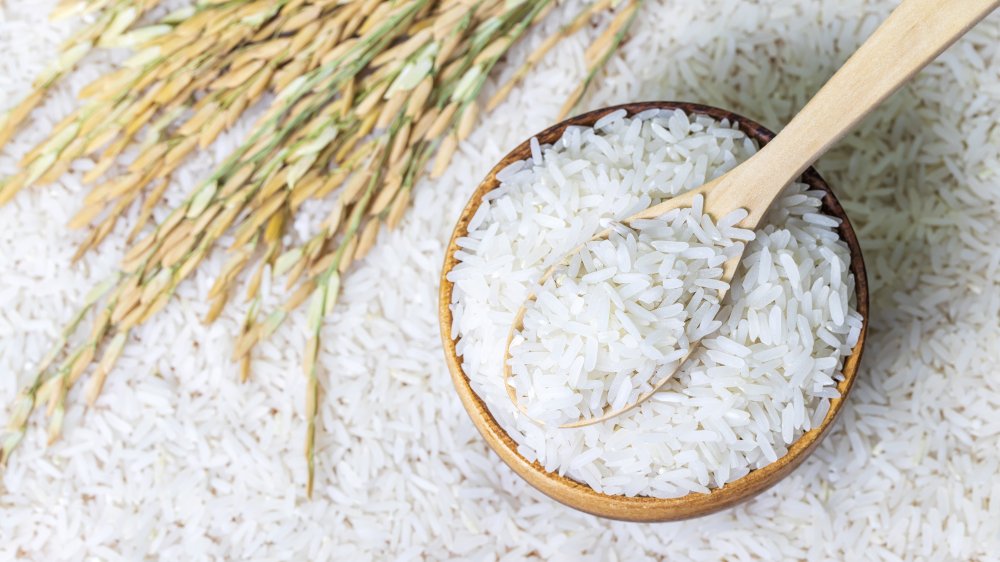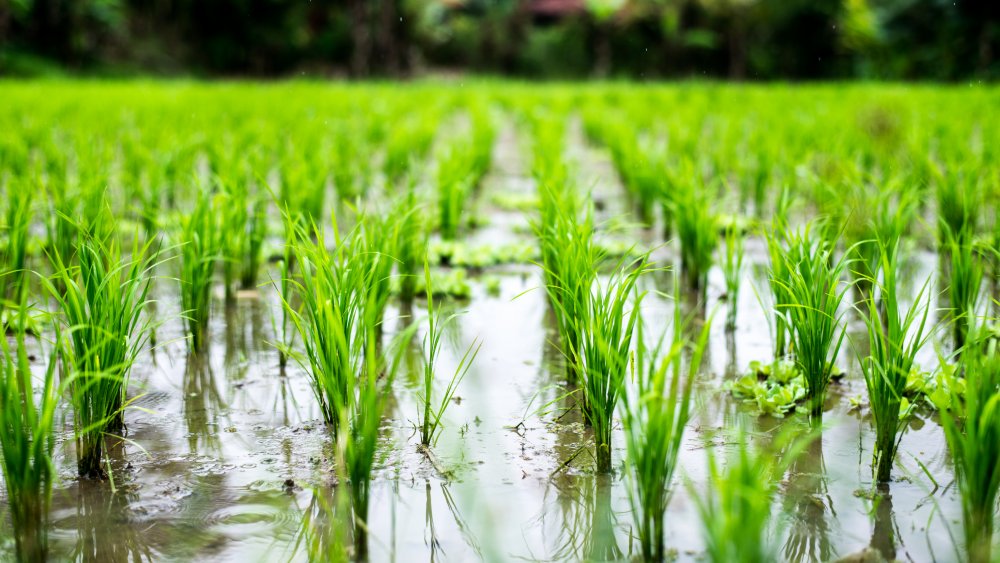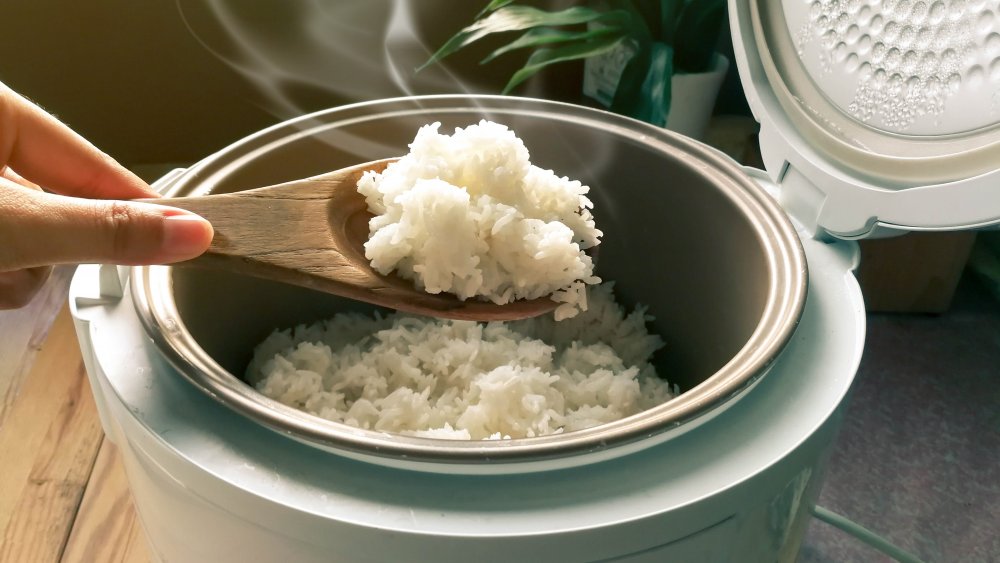The Dangerous Ingredient You Need To Watch Out For In Rice
As you may know, brown rice and white rice are actually the same thing, just at different processing stages. Brown rice is the less processed form, and its darker color comes from the outer layer of the grain that is removed to create the lighter, more refined version. As the outer layer contains both bran and germ, brown rice is considered a whole grain and, as such, is quite a bit more nutritious than the white stuff.
Unfortunately, for all its health benefits, brown rice, in particular, harbors a secret so deadly it wound up on Eat This, Not That!'s list of unhealthiest foods on the planet for one reason — this type of rice may contain significant levels of arsenic. Whoa, wait, isn't that, like, a deadly poison, the kind of thing the butler slips into the vicar's tea in an Agatha Christie murder mystery? Yep, same stuff. And it's in brown rice? Yes, and white rice, too, though removing the outer layers of the rice does cut down quite a bit on the contamination.
So what is arsenic doing in our rice?
Healthline explains that while some arsenic is naturally present in soil, rocks, and water, man-made pollutants have raised the amounts of arsenic present in groundwater to toxic levels in many areas. Some of the main sources of arsenic pollution include not only waste from manufacturing and mining operations, but also the pesticides, herbicides, and phosphate fertilizers that are often used in agriculture.
Paddy rice is highly vulnerable to arsenic contamination because it grows in flooded fields that are frequently located in areas with high levels of arsenic contamination. What's more, rice tends to absorb more arsenic from the water and surrounding soil than most other types of food crops.
Yet another concern, when it comes to rice, is the fact that it requires water in order to be cooked and absorbs all of the cooking water in the process. When rice is boiled or steamed, it will absorb any contaminants present in the cooking water.
How will the arsenic in rice affect our bodies?
So does that mean if we eat rice we're likely to wind up like the vicar in the mystery novel, toes up on the drawing room rug? Well, probably not. Most dietary arsenic is present in amounts that aren't significant enough to kill you outright. However, if you eat rice on a regular basis, smaller amounts of arsenic can still lead to a number of undesirable long-term health effects. Eat This, Not That! says that arsenic consumption is linked to higher rates of skin, bladder, and lung cancers, while Healthline also notes that arsenic ingestion can result in vascular disease (narrowing or blocking of blood vessels), high blood pressure, type 2 diabetes, and impaired brain and nerve functions.
Certain high-risk groups are at increased danger of arsenic-associated health issues. Children and teens who consume dietary arsenic may experience learning difficulties as well as trouble with concentration and poor memories, and may even have lower levels of intelligence and worse social skills than the non-arsenic impaired. If a woman ingests high levels of arsenic while pregnant, her child is at a higher risk of birth defects and developmental delays.
How can we avoid arsenic poisoning?
So does this mean we should give up eating rice altogether? No, not necessarily. As Eat This, Not That! points out, white rice is usually a safer choice. Healthline adds that using water to rinse your rice before cooking could remove anywhere from 10 to 28 percent of the arsenic, and also suggests choosing a type of aromatic rice such as basmati or jasmine as they contain less arsenic. If it's possible to determine the source of your rice, product grown in the Himalayan region (North India, North Pakistan, and Nepal) tends to be the safest kind, as is rice that is grown during the rainy season (though it would have to be pretty specialized rice to provide the date picked).
Be extra careful if you have a baby or a toddler in the house. Avoid using infant formula containing brown rice syrup, and make sure that rice cereal isn't a large part of your child's diet since young children are at greater risk due to their smaller body sizes. If you or anyone in your family has an issue with gluten, try not to lean too heavily on rice crackers, milks, or other rice-based substitutes.
Dietary diversification is key — eating rice in moderation should be relatively safe so long as it's balanced out with plenty of other healthy foods, but if rice is a main food source for you (as it is for much of the world's population), you risk developing an arsenic-related health condition.




